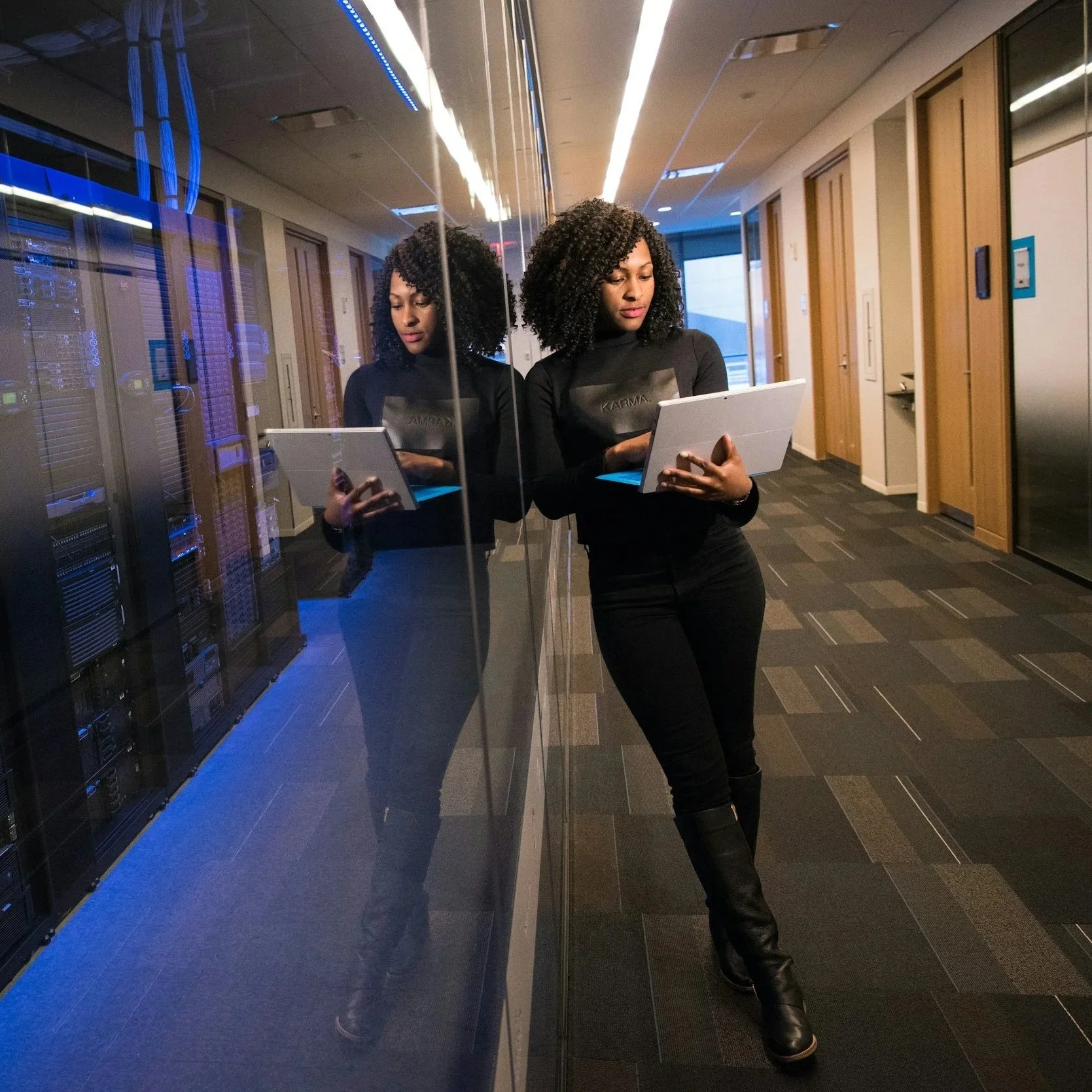Champions of Change: How Women in CX Are Reshaping Customer and Colleague Experiences
Every transformation starts with a single step.
Within the Women in CX community, we asked our members:
👉 “What’s one change you’ve championed in customer experience that made a real difference for your customers or colleagues — and what did you learn along the way?”
As always, the community responded with honesty and generosity, sharing stories of persistence, creativity, and impact. From cultural shifts to frontline fixes, their experiences highlight just how many different ways women are moving CX forward.
In this collaborative article, we’re delighted to share some of their stories and key takeaways.
Building a Culture Around CX
One clear theme that came through was the importance of culture. Tools and processes are only effective when everyone in the organisation feels responsible for the customer experience.
Making CX a Shared Responsibility
In one story, Hanane Chergui described how hard it was to convince other departments that CX was not just the responsibility of the customer service team.
By bringing together case studies — including the impact on vulnerable customers — and pairing them with financial data, she made the impact tangible.
The results spoke for themselves: bills were simplified, websites were easier to navigate, and cross-functional training ensured teams had the latest insights to act on feedback.
Her reflection:
“If we’re not reviewing the impact on our customers or listening to them, we’re doing a disservice not only to our customers, but also to our colleagues and the business. Unhappy customers don’t just affect profits — they drive up operating costs, disrupt employee experience, and ultimately impact tenure, knowledge, and customer satisfaction too.”
Putting People Before Technology
Another member, Stephanie High, explained how sometimes organisations rush into new technology without asking the most important question: Who does this help?
She shifted the conversation by making every tech decision start with people — employees and customers first.
This change led to smarter investments. Clients saved around 30% in costs, and employees had tools they could actually use.
Her takeaway:
“Tech isn’t the answer by itself — the real value comes from how well it supports people.”
“If we’re not listening to our customers, we’re letting everyone down — our customers, our colleagues, and the business. Unhappy customers don’t just hurt profits; they drive up costs, damage employee experience, and create a ripple effect that impacts everyone.”
From Ideas to Action
A strong customer-focused culture is vital, but it must also translate into practical action. Several members shared how they turned big ideas into repeatable processes that improved both customer and business outcomes.
Cutting Client Onboarding from 9 Months to 3
Jennie Lewis shared how a drawn-out client onboarding process — taking nine months — was damaging the customer experience.
By redesigning the intake process, creating standard documentation, and scaling her team with proper training, she transformed onboarding from a bottleneck into a smooth journey.
The result? Clients were able to see value within three months instead of nine, creating faster impact for them and for the business.
Her lesson:
“An exceptional customer experience is built on a foundation of operational excellence. Streamlining our internal processes and documentation wasn't just an efficiency exercise; it was the single most important factor in improving our customers' time-to-value.”
Journey Mapping in Practice
Journey mapping was another recurring theme, with members showing how powerful it can be when used as more than a one-off exercise.
For smaller businesses and solopreneurs, Susannah Simmons shared that simply getting the journey out of their head and onto paper was a game-changer. It helped visualise each stage, highlight customer emotions, and uncover hidden stakeholders who influenced progress.
That clarity alone gave leaders the confidence to act.
“Clarity creates confidence. When business owners see the full picture, they can make intentional decisions that protect their energy and create a smoother experience for everyone involved.”
In larger organisations, Stephanie Linville is taking mapping further. By focusing on the future state rather than just current problems — and tying maps to operational data such as cost-to-serve — she helped the business design experiences that were both more innovative and more efficient.
Her takeaway:
“Journey maps become transformative when treated as living artefacts that connect customer empathy to business outcomes. By pairing service design with journey management, teams were equipped with the clarity and confidence to prioritise what matters most, driving measurable value for both customers and the organisation.”
“Great customer experiences are never accidental — they’re built on a foundation of operational excellence. Streamlining our processes and documentation wasn’t merely about efficiency; it fundamentally improved how quickly customers realised value.”
Driving Change at Scale
Some stories highlighted the challenges of implementing CX changes across global organisations, where local teams often balance autonomy with central governance.
Unifying 23 Digital Portals at Lyca Mobile
Emily Stevenson described leading the transformation of Lyca Mobile’s fragmented self-service systems.
With 23 separate, outdated portals, customers were facing inconsistent experiences, and support calls were high.
The solution was a single, unified platform with local adaptations for language and currency. The impact included a 40% reduction in transaction times, an 8% increase in CSAT, and a 25% shift of Tier 1 calls to self-service.
But the real learning was about people, not technology. Local teams initially resisted, worried about losing control. By explaining the “why” clearly and creating a Global CX Council so local leaders had a say, resistance turned into support.
Her reflection:
“Ultimately, the initiative succeeded not just because of the technology, but because we championed a cultural change that valued customer consistency while empowering local teams to contribute their expertise.”
Creating a Living Customer Portal at SCIEX
Susanna Baque shared how she led the launch of SCIEX Now — a customer portal designed to give users one central place to access resources, manage instruments and software, and track support inquiries.
The goal was simple but ambitious: make it easier for customers to get what they need, save time, and feel more in control.
But launching the portal was only the beginning. To ensure it truly delivered, her team treated it as a living product. They gathered continuous feedback on features and customer interactions, using these insights to guide each update and improvement.
Her biggest learning:
“Customer experience is never static; it’s a living journey. By embedding a culture of listening and iteration, we not only enhance the value of our solutions but also strengthen trust and partnership with our customers, ensuring their voices guide the path forward.”
“The success of the initiative was driven not only by technology, but by a cultural transformation — one that valued customer consistency while empowering local teams to bring their expertise to the table.”
Designing With Not For People
Women in CX Founder and CEO, Clare Muscutt, reflected on how experience design can be a catalyst for change at scale.
“One of the biggest changes I’ve championed was introducing true customer experience design into organisations that had previously relied on process improvement alone.
Instead of fixing pain points reactively, I led teams to co-design experiences with customers and employees right from the start.
We used human-centred design methods — mapping ‘as-is’ journeys, designing ‘to-be’ visions of a future state grounded in insight, prototyping new experiences, and testing them together.
What made the biggest difference wasn’t just the tools or the visuals, but the mindset shift it created. People started to see CX not as a department’s responsibility, but as a creative, collaborative process that everyone could contribute to.”
Her takeaway:
“Building great Customer Experiences doesn’t happen by accident, it happens by design. Brilliant CX design isn’t about making things prettier or smoother — it’s about designing with people, not for them. When you bring customers and colleagues into the design process, you unlock insight, innovation, and buy-in all at once.”
What made the biggest difference wasn’t just the tools or the visuals, but the mindset shift it created. People started to see CX not as a department’s responsibility, but as a creative, collaborative process that everyone could contribute to.”
Frontline Fixes
Not every change is a huge project. Some of the most powerful stories showed how small, focused fixes on the frontline can turn dissatisfaction into loyalty.
Solving the ‘Lost Parcel’ Mystery
Sharon Peredo Sahid shared how frequent complaints about “lost” parcels were draining resources and customer trust.
By digging deeper, she found the issue: in some markets, tracking numbers were being changed mid-shipment, leaving customers in the dark.
Her fix was simple but effective — proactively sharing the new tracking numbers with customers. Complaints dropped, refunds decreased, and trust was rebuilt.
Her takeaway:
“By connecting loose ends with transparency and proactive communication, dissatisfaction turns into loyalty.”
“When we’re transparent and proactive in closing the loop, even dissatisfaction can become loyalty.”
Key Takeaways for CX Champions
Across all these stories, a few core lessons stand out for anyone championing change in CX:
Culture first. CX change sticks when everyone feels responsible for the experience.
Clarity drives confidence. Tools like journey mapping and data make friction visible and solvable.
Design with, not for. Human-centred design turns empathy into action by co-creating solutions with the people who experience them.
Empathy at scale. Big change succeeds when local teams are empowered to make it real.
Small fixes, big impact. Frontline improvements build trust one interaction at a time.
Every one of these stories reminds us that CX transformation doesn’t start in the boardroom — it starts with people brave enough to challenge the status quo.
The Women in CX community has shown once again that progress doesn’t always mean grand gestures — it’s the thoughtful, people-first changes that build momentum. These champions are proving that CX isn’t just about improving processes; it’s about reshaping cultures and strengthening human connections.
Join the Conversation
These stories are just a snapshot of the incredible insights our members shared. Inside the Women in CX community, members get the chance to dive deeper into case studies like these, swap experiences, and support each other in turning challenges into opportunities.
If these examples have sparked ideas — or reminded you of a change you’ve championed — we’d love to hear it.
👉 Come add your voice to the conversation.
Together, we can keep driving the kind of change that makes a real difference.





